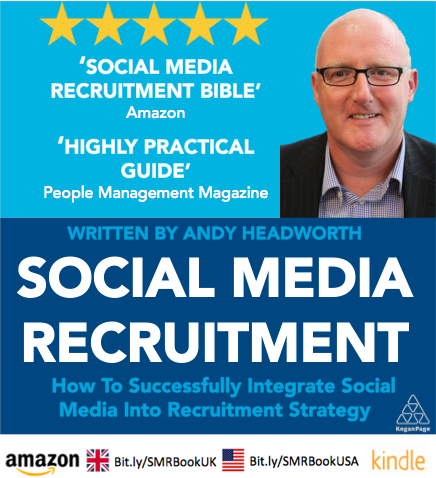How To Find The Best LinkedIn Groups To Join
What is still one of the best ways to actually connect with people on LinkedIn? You got it, LinkedIn Groups. But which ones should you join, and more importantly how do you find the best ones to join?
Before I get down to showing you, I want you just to consider why you want to join these Groups in the first place. If you think that it is just a place to dump all your jobs (recruitment tactic 101), then make sure that the Groups allow you to just post jobs (see the Group rules), otherwise you will be S.W.A.M.’ed pretty damn quick.
You can currently be a member of fifty (yes fifty!) LinkedIn Groups at any time. I always get asked by people why they should join so many groups, as they will have no chance managing them. It is a fair question, as I would be exactly the same. Here are six reasons why you need to be in so many:
- Great way of growing your network quicker with your target audience. There are millions of LinkedIn Groups, and different people will be in different groups. Allowing for slight Group name variances, you need to ensure you get access to all the people you want to reach. Think of LinkedIn Groups as one big Venn Diagram - you need to make sure you cover off all the overlaps.
- Establish your brand and reputation. When you are a member of group you can quickly get recognised as a specialist and an influencer within the group. To do this you have to post relevant and interesting content AND be responsive to questions. The more great content you share and the more discussions that you participate in, the more your brand and reputation will grow. When this happens, more people want to connect with you and (maybe) engage you for work conversations. This has happened to me on numerous occasions.
- Uncover new opportunities (recruiter) and new jobs (candidates). It is common for companies and third party recruiters to discuss new opportunities and challenges they are having within industry Groups. Often these are posted before they reach the normal external challenges, in the hope that people in the Group will be interested.
If the LinkedIn Group is particularly niche, and the members are closely aligned, then this can be a brilliant way to find people who are interested AND those magic referrals everyone talks about! - Great way to share your content to a targeted audience. As LinkedIn Groups are (should be) focused on particular sectors, interests, industries, skills etc the members will be closely aligned. Sharing relevant content and participating in discussions is a superb way of establishing your specialist knowledge and credibility.
- Build and foster relationships with hiring managers and company executives. It is common place for Hiring Managers and Senior Executives to frequent LinkedIn Groups (for many different reasons!)By doing all the above points consistently, you will quickly get their attention. At the very least you can add these people to your networks, because they ‘know you’ from the Group participation. You would not necessarily have got the same response from just connecting with them as normal.
- Free two-way contact and communication with anyone that you are in the same Group as. You can currently message anyone for free that is in the same LinkedIn Group as you. Importantly people can also message you for free. I get a lot of LinkedIn connections this way. If you are looking to grow your connections in a certain sector this a brilliant way to go about it. When searching for people, this therefore greatly expands the number of people you can message for free - the more groups you are in, the bigger the free contact pool. (Just be sensible when reaching out for the connections and make those invites personal, to maximise your chances of them saying ‘yes’ to your invite.)
So how do you deal with fifty groups then, on a day-to-day practical level?
There will be a core number of Groups you join that you will want to post and participate in on a daily/weekly basis but for all the others, my advice would be go into the Group settings and limit your discussion update to once a week (or even off). This allows you to get some of the benefits of being in many LinkedIn Groups without getting inundated with emails every day.
To do this, go to your LinkedIn Account Settings (top right of page) >> Groups, Companies & Applications (bottom of page) >> Set the frequency of group digest emails
Right now the Group basics are covered, how do you find all those different LinkedIn Groups to join? Here goes:
- Searching for them in the search bar on LinkedIn. Obvious I know, but surprisingly many people don’t ever do this! Search for keywords, industries, sectors, associations, alumni (companies and education) and anything else you can think of.
Then when you have the search results to choose from, look left on the filters and you will see that LinkedIn tell you which groups are open (anyone can join in theory) and which ones are members only. This can be a short cut to finding Groups to join quickly. - Use the Group Directory here. This way you can filter the search by country language - not all the LinkedIn Groups are in English.
- Find Groups on People Profiles. Everyone on LinkedIn has the option to show or hide the gGroups they are a member of. The majority of people just leave then showing. So every time you find a the good potential people that could be good for networking or for recruiting, always scroll down to the bottom of their profile, and see what Groups they are in. I guarantee you will find some new, different and relevant Groups here.
- Use one Group to find other similar LinkedIn Groups. When you have successfully joined a Group, then click on the i at the top of the welcome page (below)
Then click on Group Profile. This will show you all the people you are connected with in the Group AND (if you scroll down) other similar Groups you should also consider joining. Very useful as these are other Groups members of this Group have joined.
- Use LinkedIn’s own Talent Pool Reports. This is a really good way to find the best Groups in different countries and industries. Go to the LinkedIn Talent Solutions Page on Slideshare
Here you will be presented with many different slide presentations for different talent pool analysis LinkedIn have done around the world.
LinkedIn tell you the five most popular Groups for the subject they are covering in the document. This could be useful if you are looking for some international Groups to join.
Now you have no excuse. You should be able you find all the Groups you need to further take advantage of using LinkedIn for recruiting and growing your networks full of great people.
If, of course you know some other good ways to identify good LinkedIn Groups to join, please share them below in the comments.
I work with recruitment agencies and corporates to help them understand and leverage the different social media networks to improve their recruitment strategy, recruitment process, candidate attraction, employer branding and content marketing strategy. If you require guidance, advice or social recruiting training, get in touch today.
If you like reading this blog, then click on the orange RSS icon here and get the latest Sirona Says posts delivered to your RSS reader or your inbox the moment they come out.




Pingback: Here's How to Market Your Personal Brand()